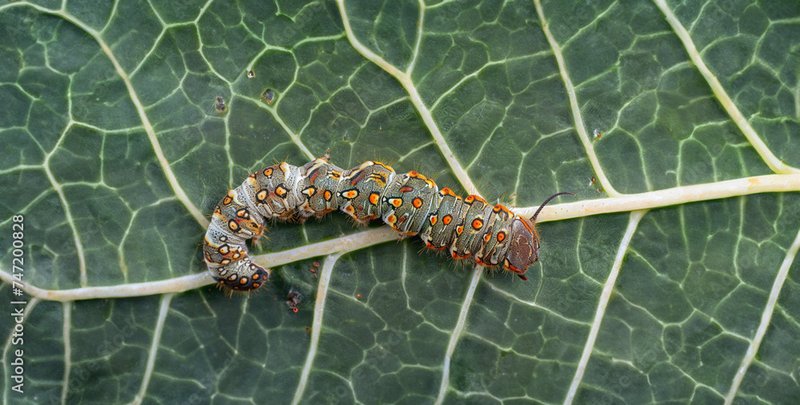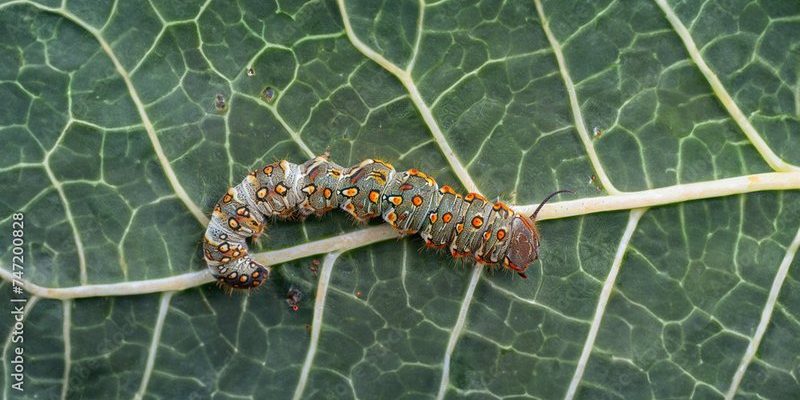
Inchworms, also known as measuring worms, belong to the Geometridae family, a group of moths that have some unique tricks up their sleeves. They’re not just known for their slow crawl; their movement pattern has a lot to tell us about their adaptation to their environment. Understanding inchworms’ movement can give us insight into their survival tactics and the mechanics behind their locomotion. So, how exactly do these little creatures get around? Let me explain.
Understanding the Inchworm’s Unique Movement
Inchworms move in a way that appears almost methodical. Picture this: they bend their bodies into a loop, then extend forward, pulling their back legs along before repeating the cycle. This movement is often described as an “inching” action, hence their name. The key to their movement lies in their **mushy body structure** and lack of a rigid skeleton, which allows for flexibility and control.
This unique movement pattern is not just for show. It’s a highly efficient way to travel through the leaves and branches they call home. By keeping their body low and close to the surface, inchworms can easily avoid predators while they munch on foliage. Here’s the thing: they might look slow, but they’re quite strategic in how they navigate their environment.
How Inchworms Move
Think of inchworms as minuscule acrobats. Their movement involves a series of contractions and extensions, which they perform skillfully. When an inchworm moves, it first curls its body, creating a U-shape. Then, it stretches out, anchoring its front legs to the ground while pulling its back legs forward. This “looping” movement minimizes the energy spent on travel and keeps them safe from potential dangers.
You might be wondering how exactly they perform this motion without legs like other insects. Instead, they rely on their **prolegs**, which are small, fleshy appendages located at the rear. These prolegs act as anchors, allowing inchworms to grip onto surfaces as they pull their bodies forward. It’s a brilliant adaptation that proves efficiency does not necessarily require speed.
The Role of Camouflage in Inchworm Movement
One of the secrets to the inchworm’s success is its incredible ability to blend into its surroundings. They often resemble twigs or leaves, which makes them hard to spot for predators. This camouflage plays a crucial role in their movement patterns. When inchworms crawl, they often do so in a way that mimics the movement of small branches swaying in the wind.
Their slow, deliberate movement helps them remain unnoticed. Imagine a little green worm creeping along a branch, moving just enough to look like part of the plant. This stealth approach allows inchworms to continue feeding and growing without much interference from hungry birds or other predators.
Effects of Movement on Inchworm Behavior
Interestingly, the inchworm’s movement is also linked to its behavior. When threatened, an inchworm may freeze in place or drop from a branch, using its natural color to blend into the environment. This strategy allows it to escape detection while it waits for the danger to pass.
Additionally, the way they move and their camouflage can affect how and where they feed. Being low to the leaves lets them nibble on greenery while staying hidden, which is crucial for their survival. This beautiful synergy between movement and behavior is a great example of how nature has fine-tuned these little creatures for success.
Life Cycle and Movement Adaptations
Like many insects, inchworms undergo a fascinating life cycle that includes several stages: egg, larva (the inchworm), pupa, and adult moth. During the larval stage, their movement patterns not only help them feed but also prepare them for their next transformation into a moth.
As they grow, inchworms will start to explore more, looking for a safe spot to pupate. Their movement during this stage is critical, too. They often choose hidden locations to hang upside down or wrap themselves in silk, further showcasing how their crawling method serves them in various life stages.
Predators and Natural Defenses
Inchworms face numerous predators, from birds to larger insects. Their unique movement and camouflage are their primary defenses, but they also have other tricks up their sleeves. For example, **some species can produce a defensive chemical** when threatened, which can deter predators. This combination of movement, camouflage, and chemical defense makes them quite the survivor in the animal kingdom.
Their movement patterns not only help them escape quickly but also allow them to find food and mates without attracting too much attention. This balance is crucial for their overall survival in the wild.
Why Understanding Inchworm Movement Matters
So, why should we care about how inchworms move? Understanding their movement patterns sheds light on how these creatures adapt to their environments. It’s a reminder of the complexity and creativity of nature. We often overlook the small things in life, but inchworms teach us that even the tiniest creatures have fascinating stories to tell.
Plus, knowing how inchworms move can inspire us in unexpected ways. For example, their unique locomotion has been studied in robotics, helping scientists develop better movement technology for machines. There’s so much more to these little creatures than meets the eye!
Final Thoughts: The Charm of Inchworms
Inchworms may be small and seemingly simple, but their movement patterns reveal a rich and complex story. From their inching crawl that acts as a stealthy maneuvering tactic to their ability to adapt to predators, these little creatures remind us to appreciate the intricacies of nature. So next time you see an inchworm inching along, take a moment to observe and appreciate its unique way of navigating the world. You might find that there’s a lot more to learn from these tiny gymnasts than you initially thought!

